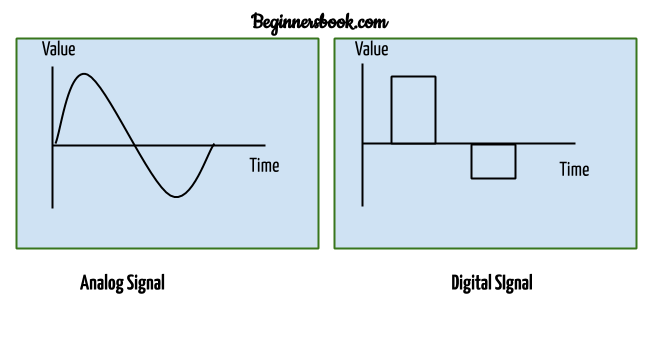

When analog signals are brought into a computer, they must be made discrete (finite and countable). This paper presents a four-channel time-interleaved 3GSps 12-bit pipelined analog-to-digital converter (ADC). Analog signals must be discretized (digitized) to produce a finite set of numbers for computer use. What is the difference between analog and continuous signal?Ī continuous signal cannot be stored, or processed, in a computer since it would require infinite data. In contrast to the devices show nabove the SC-1 also detects digital, pulsed signals like DECT- or GSM-phones, WiFI (Wireless LAN) or other digital signals. Analog Temperature Control System Project Kit by.These analog accelerometers are again classified into different types based on the variety of configurations and sensitivities. Analog-to-digital conversion (ADC) changes a variable analog signal into a digital signal that a computer understands. The term 'analogue' describes the proportional relationship between a signal and a voltage or current that represents the signal.

The following continuous curve showing temperature variation throughout the day. IntroductionDespite the availability of the digital field bus in several versions, industrial control systems continue to employ standard analog signals for. Analogue electronics ( American English: analog electronics) are electronic systems with a continuously variable signal, in contrast to digital electronics where signals usually take only two levels. Radio signals are also categorized as analog signals. It is shown below: Examples of analog signals are electrical signals, light signals, speech signals, etc. A continuous model is convenient for some situations, but in other situations it is more convenient to work with digital signals i.e., signals that have a discrete (often nite) domain and range. (The latter would be analog as regards its waveform, but digital as regards its signaling strategy.) Most digital signals are binary that is, they signal the. The common shape of an analog signal is the sinusoidal wave. Examples of analog quantities are time, temperature, pressure, distance, and sound. An Analog signal is a signal whose characteristics, such as voltage, amplitude, or frequency, vary with time. The quantity that has continuous values is called as the analog quantity. ADI Signals+ Analog Devices ADI Signals+ INNOVATING FOR HUMANITY Using the power of innovation to impact the world around us.


 0 kommentar(er)
0 kommentar(er)
